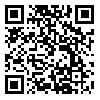BibTeX | RIS | EndNote | Medlars | ProCite | Reference Manager | RefWorks
Send citation to:
URL: http://ce.mazums.ac.ir/article-1-311-en.html

 , Maryam Ahmadi Khatir
, Maryam Ahmadi Khatir 
 , Ehteram-Alsadat Ehteram-Alsadat Ilali
, Ehteram-Alsadat Ehteram-Alsadat Ilali 
 , Hamideh Azimi Lolaty
, Hamideh Azimi Lolaty 

Attachment styles are the effective elements in the formation and posing any question about the problems of aging and how to deal with these issues. This study aimed to review attachment styles and its associated factors in the elderly. Using keyword search about the title or abstract in the databases like Magiran, SID, Medlib, Iranmedex, Google Scholar for Persian language studies and the articles with their full text in English on the databases as Proquest Elsevier, Ovid, PubMed, Science direct, Google Scholar using the following key words in both Persian English, the search was done. The key words covered Attachment model, Attachment style, Attachment pattern, with the individual terms, aging, elder, aged, old people elderly. Out of these ones, during 2000 and end of the 2016, 83 articles in the field of attachment style in the elderly group with 60 years old and older, were extracted. Of these, 19 articles were selected as most relevant to our objectives and were examined. The results showed that insecure attachment style was closely related to the increasing number of problems of the elderly in this period. Some studies reported the score of safe attachment style in the elderly living at home higher than the elderly living in nursing homes. The avoidant or anxious attachment styles were common patterns among the residents of nursing homes. There was a significant relationship between attachment patterns and chronic diseases and sleep problems in the elderly. The pattern of attachment has an effective role in decision-making, depression and anxiety in the elderly. The attachment styles are also influenced by gender. Secure attachment style has increased by expanding the communication with the elderly. The findings of the studies showed that attachment styles can predict elderly happiness, self-esteem and self-care behaviors associated with strong attachment styles dimensions. Improving the communication with family and living at home beside the family are effective in the correct pattern of attachment, and this improvement can help to prevent many diseases related to the mental status of elderly people.
Received: 2016/05/19 | Accepted: 2017/05/20 | Published: 2017/05/20
| Rights and permissions | |
 |
This work is licensed under a Creative Commons Attribution-NonCommercial 4.0 International License. |



